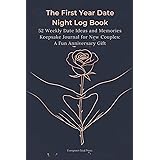The journey to “happily ever after” for a wedding couple often involves a labyrinth of planning, coordination, and unexpected challenges. While the dream is a flawlessly executed celebration, the reality, as seasoned professionals Leora from Best Bride and Katie Hall Goodman from Best Day Ever LA Events expertly illustrate in the accompanying video, is that wedding planning disasters are an inherent part of the landscape. These aren’t just minor hiccups; they can be significant logistical and interpersonal crises that threaten to derail the entire day. For engaged couples and event professionals alike, understanding these potential pitfalls and, crucially, how to mitigate them, is paramount.
Navigating the Unforeseen: Essential Wedding Day Contingency Planning
A successful wedding day isn’t just about perfect execution; it’s about superior crisis management when things inevitably go awry. Imagine having months, sometimes years, of meticulous planning culminating in a single day, only for unforeseen circumstances to throw everything into chaos. Professional wedding planners like Leora and Katie, with their combined 11 years of experience, have seen it all. Their horror stories aren’t just entertaining anecdotes; they’re vital lessons in preparedness and the indispensable value of having a competent professional at the helm.
1. Attire Alarms: Preventing Last-Minute Wardrobe Woes
One of the most common, yet easily preventable, wedding day emergencies revolves around bridal party attire. Leora recounted a chilling scenario where, on the wedding day itself, the groom discovered his rented tuxedo simply did not fit. Not just a little snug, but entirely the wrong garment, affecting the entire wedding party’s look. The groom, expecting an ivory cream high-waisted look, found himself scrambling with his planner to buy eight shirts and six different tuxes from a mall, moments before his first look. This crisis escalated to the point where the groom considered postponing the wedding. It’s a stark reminder that even seemingly minor details can provoke immense stress.
- **The Critical Importance of Final Fittings:** This incident underscores a non-negotiable step: always try on your full wedding day attire (including accessories) when you pick it up from the tailor or rental company, ideally a week or two before the event. Do not assume everything will be correct.
- **Vendor Vetting and Contract Clarity:** Ensure your contract with the attire vendor specifies replacement policies and timelines for last-minute alterations or exchanges. A reputable vendor should offer solutions, but the onus is often on the client to verify.
- **Emergency Kit Essentials:** Beyond the usual safety pins, consider having a mini emergency kit for wardrobe malfunctions that includes a measuring tape, basic sewing kit, and stain remover.
2. Guest Experience: Mitigating Staffing and Service Shortfalls
The guest experience is central to any celebration, and nothing can sour it faster than perceived neglect or disorganization. Katie’s story of the mother of the bride who refused to hire adequate bar staff for her higher guest count is a classic example. Despite Katie’s expert recommendation, the mother opted to cut costs, leading to long lines, frustration, and ultimately, an unacceptable incident where she physically assaulted a server. This scenario highlights how poor planning in one area can cascade into significant issues, affecting guest enjoyment and even leading to legal repercussions.
- **Strategic Staffing for Seamless Service:** Always prioritize adequate staffing for peak service times, especially during cocktail hour. This applies not just to bartenders, but also to servers, coat check attendants, and even valet. Overestimate rather than underestimate.
- **De-escalation Tactics with Difficult Guests:** While physical assault is extreme, dealing with intoxicated or demanding guests is not uncommon. Professionals are trained in de-escalation, but for couples, setting clear expectations with family about appropriate behavior is crucial.
- **Budgeting for the “Must-Haves”:** Understand that certain costs, like appropriate staffing for guest comfort and safety, are non-negotiable investments in the overall success and atmosphere of your event. Cutting corners here often leads to bigger problems.
3. Managing Family Dynamics: The Uninvited Planning Interventions
Weddings are often the nexus of complex family dynamics, and sometimes, well-intentioned (or even not-so-well-intentioned) relatives can introduce significant stress. Leora’s anecdote about the mother-in-law who, two days before the wedding, declared her hatred for lavender (the bride’s chosen color for a year) and then hired an entirely separate florist to bring in yellow flowers on the wedding day, is a testament to the unpredictable nature of family involvement. This kind of unilateral action, driven by personal preference rather than the couple’s wishes, can cause immense friction.
- **Early Involvement vs. Last-Minute Surprises:** Determine early on who will be involved in which aspects of planning. If a family member hasn’t been part of a decision for months, a last-minute objection is often too late and disruptive.
- **Clear Communication Boundaries:** It’s essential for the couple to present a united front and for the planner to reinforce those boundaries professionally. “This isn’t kindergarten; it’s about what the couple wants,” as Leora eloquently put it.
- **Creative Conflict Resolution:** Leora’s solution of placing the unapproved yellow flowers in the hotel lobby as a “thank you” to the mother-in-law demonstrates expert-level diplomacy. Sometimes, small compromises in non-critical areas can defuse major blow-ups.
4. Weather Woes and Wicked Wheels: Preparing for External Variables
Some wedding day disasters stem from external factors beyond anyone’s direct control, like weather, or from critical vendor failures. Katie recounted a wedding in Santa Barbara where, against advice, clients chose not to rent a tent for an outdoor venue, leading to guests huddling under napkins in the rain. Compounding this, the hired vans for guest transportation at the end of the night arrived with high drivers, posing an enormous liability for over a hundred guests. These stories highlight the importance of anticipating the unpredictable.
- **Contingency for Climate:** For any outdoor event, a weather contingency plan is non-negotiable. This means budgeting for tents, indoor backup spaces, or alternative heating/cooling solutions. “Hope for the best, plan for the worst” is the mantra.
- **Ensuring Safe Guest Transportation:** Vetting transportation vendors thoroughly is vital. Beyond checking reviews, ask about driver screening processes, insurance, and backup vehicle availability. Katie’s ability to find sober kitchen staff to drive 100+ guests demonstrates an extreme level of resourcefulness, but it’s a situation no one wants to be in.
- **Vendor Vetting and Contract Clarity (Revisited):** This applies to all vendors. Ensure contracts specify contingencies, insurance, and clear lines of communication for emergencies.
The Indispensable Role of a Professional Wedding Planner
The common thread woven through all these wedding planning disasters is the presence of a professional wedding planner who stepped in to manage the crisis, de-escalate tension, and find immediate solutions. From buying tuxedos on the fly to negotiating with venues about physically assaulting guests, or strategically placing rogue floral arrangements, planners like Leora and Katie are the unsung heroes of the big day.
From Chaos to Calm: A Planner’s Perspective
Imagine if these situations had unfolded without the intervention of an experienced planner. The groom might have refused to marry, the mother of the bride could have faced charges, the entire floral aesthetic might have been ruined, and guests could have been stranded or endangered. These scenarios are not just “horror stories” but powerful case studies illustrating the multifaceted value of professional event management:
- **Problem Anticipation:** Planners often foresee problems before they arise, guiding clients to make informed decisions (like hiring enough staff or renting a tent).
- **Vendor Management & Accountability:** They manage relationships and hold vendors accountable, ensuring contracts are honored and services delivered as promised.
- **Conflict Resolution:** Planners are skilled diplomats, navigating difficult family dynamics and guest behavior with grace and firmness.
- **Emergency Logistics:** When the unexpected occurs, they are the first responders, pivoting quickly to implement solutions and protect the couple’s experience.
- **Stress Buffer:** Ultimately, a planner acts as a crucial buffer, absorbing stress and handling crises so the couple can focus on enjoying their once-in-a-lifetime day.
The insights from these real-world wedding day emergencies underscore a fundamental truth: a perfectly smooth wedding day is often the result of exceptional, invisible problem-solving. For any couple embarking on this exciting journey, consider these lessons not as scare tactics, but as compelling arguments for comprehensive planning and, ideally, the invaluable partnership with a professional wedding planner.











